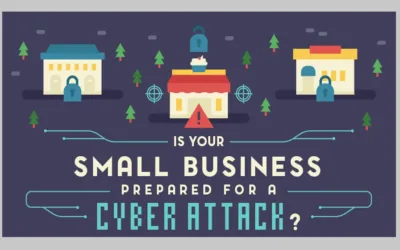Romantic catfishing is a deceptive online trick where someone creates a fake identity on dating platforms or social media to establish a romantic relationship under false pretenses. This type of attacks or deceptive techniques make use of stolen photos and fictitious personal information, often weaving elaborate stories to appear genuine and sincere. They manipulate emotions, engaging their unsuspecting target in a romantic or emotional relationship.
Victims of romantic catfishing may invest emotionally and even financially, only to discover they’ve been deceived. This practice often involves elaborate lies and emotional manipulation, exploiting the victim’s trust and vulnerability. The catfish’s motives can range from personal amusement to financial gain, and the consequences for the victim can be devastating, leading to heartbreak, financial loss, and emotional distress. Being cautious and verifying the authenticity of online relationships is crucial in protecting oneself from falling victim to romantic catfishing schemes.
Why do People Engage in Catfishing
There is a variety of in-depth reasons why people get involve in catfishing. While some may seem obvious, here are reasons stated by research:

- Insecurity: Some catfishes create fake accounts and use other people’s images because they have low self-esteem and are not confident enough to show who they really are.
- Financial Gain: One of the most common reasons for catfishing is to get money from someone by tricking the victim into a romantic relationship, and then using a variety of lies and stories to guilt them into sending money.
- Sexual Exploration: A catfish perpetrator may be someone who is confused about their sexuality, who is acting as someone else to explore their sexual preferences without the risk of revealing their true identity.
- Revenge: Catfishing can be used as a means of revenge to get back at someone, usually an ex-partner. The catfish will use their fake online identity to get sensitive information/content to use as blackmail. They may even pretend to be the person they’re trying to get back at by creating a fake profile under their name and posting lewd content that could damage the person’s reputation.
- Harassment: Some people will use catfishing to amplify their cyberbullying, meaning they’ll set up a number of fake profiles, so their victim thinks there are multiple people coming after them. This is done to increase the amount of emotional distress caused to the victim.
The Signs and Deception of Romantic Catfishing
Romantic catfishing is like a Shakespearean tragedy set in the digital realm. It begins with a seemingly genuine connection, blossoms into love, but all the while, one partner hides behind a mask of deception. The catfisher just like a scammer creates an elaborate web of lies, weaving tales of love and commitment to lure their unsuspecting victim. The emotional investment deepens, leading the victim to trust and believe in a love that doesn’t truly exist. The fallout is heart-wrenching, leaving the victim emotionally shattered and questioning their trust in future relationships.
1. Recognizing the Signs: Trust Your Instincts
The first step in avoiding romantic catfishing is recognizing the signs. Trust your instincts and be wary of red flags. If your online love interest avoids video calls, makes excuses for not meeting in person, or has a life story that seems too perfect, it’s time to question the authenticity of the relationship. Listen to your gut feeling; it’s often your most reliable guide.
2. Online Presence: Dig Deeper
Before you get emotionally invested, delve into your online love interest’s digital footprint. Conduct a reverse image search to check if their profile pictures appear elsewhere on the internet. Scrutinize their social media profiles for inconsistencies and authenticity. Genuine individuals tend to have a consistent online presence, while catfishers often lack a well-established digital history.
3. Communication Patterns: Analyze Conversations
Pay attention to communication patterns. Catfishers may use elaborate language or avoid answering specific questions directly. Look for inconsistencies in their stories and evaluate their willingness to share personal information. Genuine individuals are open, honest, and transparent in their conversations.
4. Verification: Video Calls and Real-Life Meetings
To establish authenticity, suggest a video call. Seeing each other in real-time can dispel doubts and provide a genuine connection. If your online partner hesitates or consistently avoids video calls, it’s a significant cause for concern. Additionally, plan real-life meetings in safe, public places. A genuine person will welcome the opportunity to meet face-to-face.
5. Cybersecurity Tools: Your Digital Armor
Utilize cybersecurity tools to protect your online presence. Install reputable antivirus software that can detect phishing attempts and malicious links. Be cautious while clicking on unknown links or downloading attachments. Regularly update your devices and apps to strengthen your digital defenses against potential threats.
6. Report Suspicious Activity: Be a Cyber Guardian
If you suspect that you’re being catfished, report the suspicious activity to the platform administrators. By doing so, you not only protect yourself but also contribute to making the online community a safer space for everyone.
7. Self-Care: Healing from Heartbreak
If you’ve fallen victim to romantic catfishing, remember that healing takes time. Reach out to friends, family, or a mental health professional for support. Engage in self-care activities that bring you joy and help rebuild your confidence. Remember, you are not alone, and there is love and genuine connection waiting for you beyond the digital maze.
What to Do if You Think You’re Being Catfished
If you think you are being catfished, start by gathering all basic information about them (gender, age, birthday, location, job, photos, etc.) and look for inconsistencies in what they have told you over the course of your relationship. You can then report them to the police, and they can open an investigation against the potential person of interest. You could also hire a local investigator if you are not comfortable going to the police.
Furthermore, If anyone makes you feel uncomfortable or unsafe you can always stop the conversation or put it on pause while you do an image search and check through the other warning signs. Don’t share any more personal information or money. And don’t feel pressured to move at their pace – if the person really cares about you, they will give you the time you need.
You can also reach out directly to the platform you met them on to hopefully get them removed from the site. All in all, catfishing is very real and very common, but knowing what to look for can help you stay safe and avoid being the victim of a catfisher. As always, use caution when online dating and look for these other early red flags.
Conclusion
In the world of online romance, genuine connections are abundant, but so are the pitfalls of deception. By trusting your instincts, verifying identities, and utilizing cybersecurity tools, you can navigate the realm of online dating safely. Remember, authentic love is built on trust, respect, and honesty. By staying vigilant, you can protect your heart and embrace the love you truly deserve. Here’s to finding love authentically, in a world that often hides behind screens.





